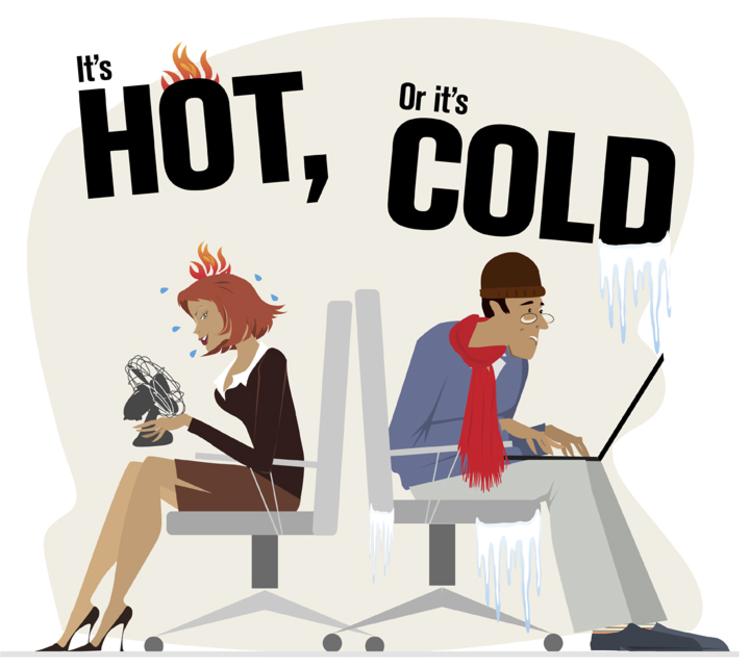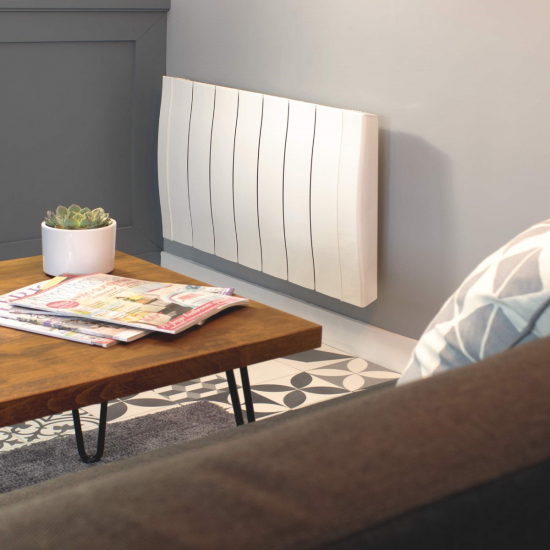 Mark Zuckerberg likes to keep the Facebook office temperature at a cool 15 °C, whilst President Obama keeps his Oval Office so hot “you could grow orchids in there”, according to one of his senior advisers.
Mark Zuckerberg likes to keep the Facebook office temperature at a cool 15 °C, whilst President Obama keeps his Oval Office so hot “you could grow orchids in there”, according to one of his senior advisers.
Should you realise life-long career aspirations in becoming the resident DJ of your office thermostat, be warned that one faces an uphill struggle selecting temperatures which win the hearts and minds of all your work colleagues. In a 2015 study of 129 office workers, 42% of people thought their building was too warm, whilst 56% believed that it was too cold. There appears no end in sight in this deeply divided ideological battle for the perfect office temperature.
Office temperature – is it important?
Temperature is, in fact, massively important to office productivity. Working conditions too hot or too cold have been shown to have a significantly adverse effect on concentration and work performance. Studies have shown that working temperatures above 23 °C are likely to decrease productivity, furthermore at 30 °C and above your productivity drops to about 90% of its original capacity. In contrast, temperatures below 20 °C can increase employee error rate whilst also increasing the chances of employees getting sick, que a moment of sympathetic silence for Zuckerberg’s employees. Facebook is actually operating 1 °C under the UK Approved Code of Practice which suggests a minimum temperature of 16 °C. These are not, however, absolute legal requirements.
Is there a best temperature for offices?
Over the years, numerous studies have been conducted in the search for a perfect office temperature. Looking at overall employee productivity, the Helsinki University of Technology discovered that performance peaked in an office heated to around 22 °C. However, this is a long way from being the whole story of the relationship between temperature and productivity. Whilst individual studies may vary in the precise temperatures recommended for optimal worker performance, there is one theme which prevails throughout all office temperature investigations –it’s apparently impossible to please everyone. No matter where you are in the world, individual differences such as age and gender can cause radical differences in the preferred comfort temperatures of your employees.

Individual Differences
Age
Several published reports have displayed an apparent difference in baseline body core temperatures between young and older adults.
There is also evidence to suggest that the effectiveness of the body’s ability to regulate its temperature depreciates after the age of 60. Clearly, there are physiological differences at play in the way our bodies regulate temperature, so try and be understanding of your younger or older counterparts in your quest for the perfect office temperature.
Weight
Fat provides our bodies with a layer of natural insulation, so it goes without saying that the amount of fat on our bodies will have a significant impact on our sensitivity to temperature. A logical conclusion to draw from this may therefore be that if your office is too cold, you should treat yourself to another burger. Speaking from experience this strategy is usually not the best way to combat a chilly working environment.
Gender
Physiological differences can impact the ability to retain heat in a similar way to weight. Generally speaking, men tend to have greater muscle mass than women and, thus, they are usually quicker to warm up than women. Women, meanwhile, tend to have a larger quantity of constricted vessels that keep blood near the skin’s surface. This is partly a result of the physiological need to pool blood around their core organs which therefore draws it away from their hands and feet. In layman’s terms, this equates to women having a greater need to warm up their hands and feet than men.
Clothing
It goes without saying that the number of layers you’re wearing will make a significant difference to your overall warmth. It’s somewhat unfortunate that typical office wear gives men much less scope to dress for warm weather than women. Whilst women can cool off with bare legs, dresses and skirts, their unfortunate male colleagues – who are biologically more likely to favour the cold – are left to stifle in shirts, suits and full length trousers. Businesses looking to keep everyone happy should ensure the company dress codes offers the flexibility to both wrap up and cool off. Make sure jumpers are an option for everyone over the winter, and consider relaxing the dress code during periods of exceptionally warm weather.
Other
It has been evidenced that pregnant women and people with some types of disabilities have a lower tolerance to higher temperatures. At the same time, there are a whole host of medical conditions which can increase sensitivity to cold, including anemia, hypothyroidism and some cancers.

External Variables
Season
Summer can hit productivity hard. A recent survey discovered that, in summer, workplace productivity drops 20%, attendance drops 18%, project turnaround times increase 13% and employees are 45% more likely to be distracted. Whilst there may be more variables than temperature impacting work performance here, it can be assumed that an office with well-regulated temperature controls in the midst of summer will likely be conducive to a more productive working environment, just as a well heated office will perform better in the winter.
Humidity
Just when you thought you were well on the way to a popular plan of action for your thermostat, humidity will tear apart any conclusions you may have come to regarding a suitable office temperature. Humidity impacts the perceived temperature in an office. Whilst the reading on the thermostat may be the same, a humid office will always feel hotter than a dry office, whilst a lack of humidity can cause respiratory problems, with a lack of water vapour drying out your skin, throat and nasal passages.

Solution
Because everyone reacts differently to varying levels of heat, there never will be a perfect office temperature. There is, however, a generally agreed consensus based upon a wide range of studies that points to an optimal temperature lying between 20 °C and 23 °C. In most offices this will no doubt remain contentious, so the best course of action is to choose a heating system which allows for the upmost flexibility.
Electric radiators make a great choice for offices because they are individually controlled with their own thermostats, making it easy to select different temperatures for different office zones. This makes it possible, like never before, to reach diplomatic solutions in the deeply divided war of ideas that has become an unfortunate institution in office life.
Image Sources
http://library.gwu.edu/news-events/posts/addressing-temperature-complaints-gelman
http://www.mobilkyla.se/kyla-ac/
http://www.today.com/health/office-air-conditioning-cold-women-science-reveals-why-t36476
http://www.reece.com.au/outlet/2015/nov/why-men-and-women-battle-over-the-office-temperature
http://news.nationalgeographic.com/energy/2015/08/150803-gender-bias-affects-office-heating-cooling-temperatures/
http://www.dailymail.co.uk/news/article-2365434/UK-weather-Mercury-expected-rise-32C-making-today-hottest-day-year.html







